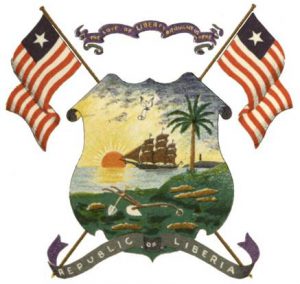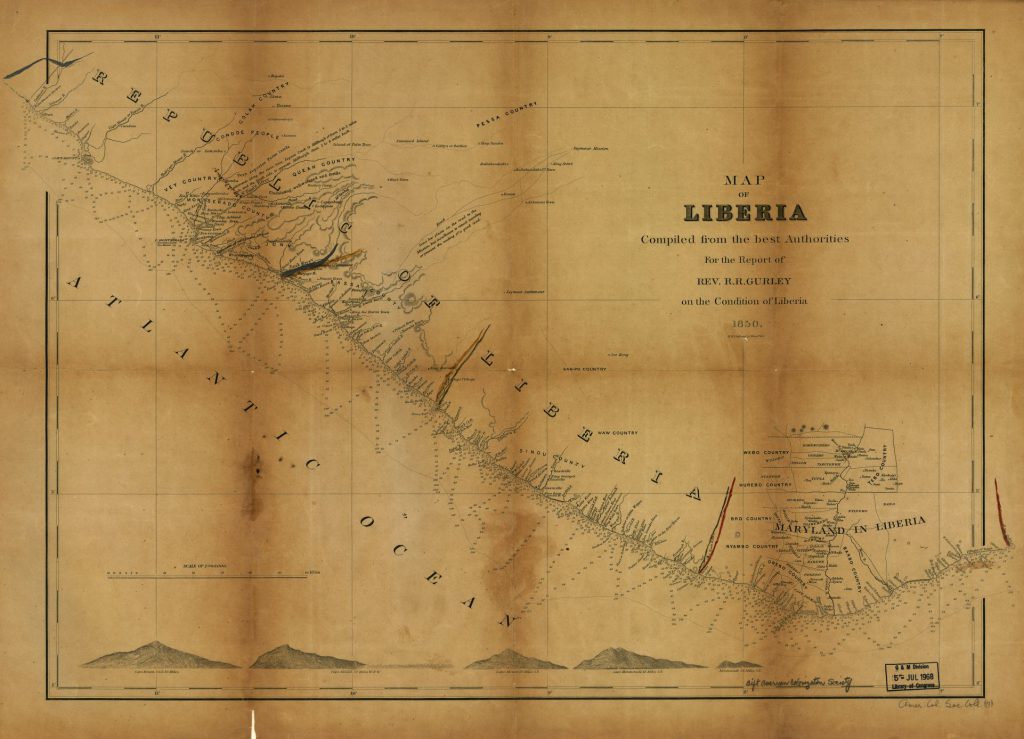Forming a Nation
 By late 1845 the Commonwealth officials were considering the idea of independence and being in total control of the affairs of Liberia. They met on October 7, 1846 to discuss the implications of an independent state.
By late 1845 the Commonwealth officials were considering the idea of independence and being in total control of the affairs of Liberia. They met on October 7, 1846 to discuss the implications of an independent state.
Liberian gained her independence neither from a colonial master nor by bloodshed. It was a peaceful transition from the Commonwealth to the Republic of Liberia. According to Stockwell, it did not involve smoke or battle, lacked an antagonistic or aggressive sense, but “opened a door of hope for a race long doomed victims of oppression” (Stockwell, 1868).
This transition was for economic reasons. Liberia’s main source of income was from custom duties which the British refused to pay, claiming the American Colonization Society (ACS) and the Commonwealth were not sovereign nations. This situation prompted Governor Roberts to press for independence (Watson, 1996). The ACS being unable to protect Liberia against such situations “resolved that the time had arrived when it was expedient of the people of the Commonwealth of Liberia to take into their own hands the whole work of all their foreign relations” (Brawley, 1921).
In 1824, General Robert Goodloe Harper, one of the original members of the ACS and an advocate for the colony and its independence and after whom Harper city is named, had recommended the name – Liberia, meaning land of liberty (liber- ‘liberty’ and ‘ia’ – land) in Latin. He had also suggested that the name of the capital Christopolis be changed to Monrovia after US president James Monroe.
The Declaration of Independence and Constitution were adopted on July 26, 1847, making Liberia Africa’s first independent nation and the world’s 44th. Of all the African nations, other than Ethiopia, Liberia can boast of not having a colonial master.
This ‘land of the free’ was a nation established for the Americo-Liberians/colonists. The national emblems adopted for the new nation reflected freedom from slavery, the colonists’ American roots and their voyage to Liberia. The motto was ‘The Love of Liberty Brought Us Here” and citizenship was limited to the colonists and excluded the natives.
A New Government

On the first Tuesday of October 1847 the nation held its first election and Governor Joseph Jenkins Roberts and Nathaniel Brander were elected president and vice president. Roberts’s administration began its term on January 3, 1848.
It consisted of 5 cabinet members including the Secretary of State (Hilary Teague), Secretary of the Treasury (Stephen A. Benson), Secretary of War and Navy, Attorney General (Dixon Brown) and Postmaster General.
The legislature had 6 Senators (two from each county – Montserrado, Grand Bassa and Sinoe) and 8 Representatives. The Judiciary had 3 Justices on the Supreme Court with Samuel Benedict as the Liberia’s first Chief Justice.
Sources
Brawley, Benjamin Griffith. A Social History of the American Negro, Being a History of the Negro Problem in the United States, Including a History and Study of the Republic of Liberia. The Macmillan Company, 1921. Print.
Büttikofer, Johann. Travel Sketches from Liberia. Ed. Henk Dop & Phillip T Robinson. Leiden; Boston: Brill, 2013. Print.
Joseph Saye Guannu – 1985 – short history of Liberia.
Maugham, R. The Republic of Liberia, Being a General Description of the Negro Republic, with Its History, Commerce, Agriculture, Flora, Fauna, and Present Methods of Administration,. C. Scribner’s sons, 1920. Print.
Starr, Frederick. Liberia : Description, History, Problems. Chicago: s.n., 1913. Print.
Stockwell, G. The Republic of Liberia: Its Geography, Climate, Soil and Productions, with a History of Its Early Settlement. A. S. Barnes & co., 1868. Print.
Watson, Noelle. International Dictionary of Historic Places: Middle East and Africa. Chicago: Fitzroy Dearborn Publishers, 1996. Print.
Wilson, Charles Morrow. Liberia: Black Africa in Microcosm. [1st ed.]. Harper & Row, 1971. Print.
Views: 259